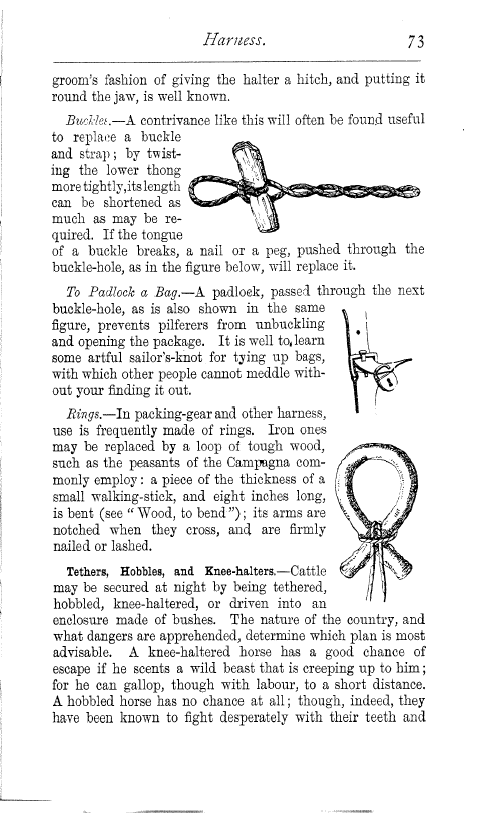Harness.
73
groom's fashion of giving the halter a hitch, and putting it round the jaw, is well known.
Buc7,,le,,.-A contrivance like this will often be found useful to replace a buckle
and strap ; by twisting the lower thong more tightly, its length can be shortened as much as may be required. If the tongue
of a buckle breaks, a nail or a peg, pushed through the buckle-hole, as in the figure below, will replace it.
To Padlock a Bag.-A padlock, passed through the next buckle-hole, as is also shown in the same figure, prevents pilferers from unbuckling and opening the package. It is well to, learn some artful sailor's-knot for tying up bags, with which other people cannot meddle without your finding it out.
Rings.-In packing-gear and other harness, use is frequently made of rings. Iron ones may be replaced by a loop of tough wood, such as the peasants of the Campagna commonly employ : a piece of the thickness of a small walking-stick, and eight inches long, is bent (see " Wood, to bend ") ; its arms are notched when they cross, and are firmly nailed or lashed.
Tethers, Hobbles, and Knee-halters.-Cattle
may be secured at night by being tethered, hobbled, knee-haltered, or driven into an
enclosure made of bushes. The nature of the country, and what dangers are apprehended, determine which plan is most advisable. A knee-haltered horse has a good chance of escape if he scents a wild beast that is creeping up to him ; for he can gallop, though with labour, to a short distance. A hobbled horse has no chance at all ; though, indeed, they have been known to fight desperately with their teeth and

